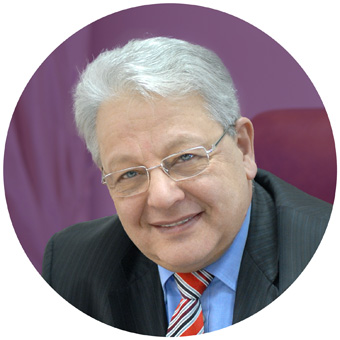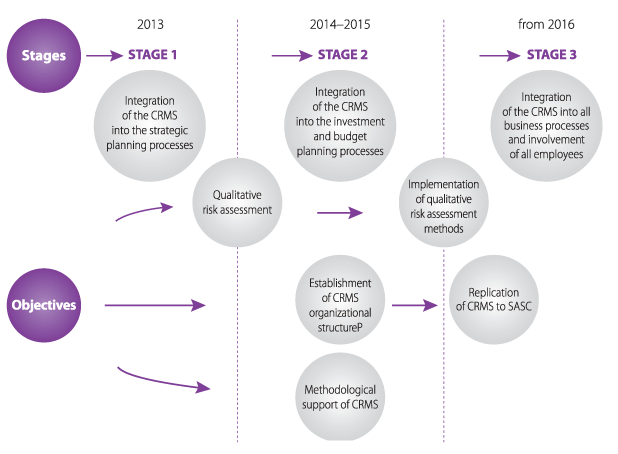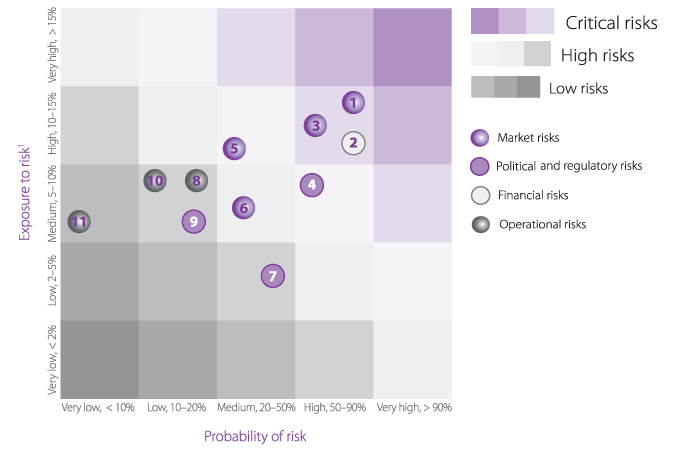Key performance indicators and remuneration for the management
In the reporting year, no dividends were paid by OJSC Atomenergomash as no decision to declare dividends was made.  No local regulatory acts governing the dividend policy were adopted by the Company.
No local regulatory acts governing the dividend policy were adopted by the Company.
Payment of declared (assessed) dividends (for the entire Division)
Para. 2, Article 64 of the Federal Law "On Joint Stock Companies" states that based on decisions of the General Meeting of Shareholders, members of the Board of Directors of the Company during performance of their duties may be paid a remuneration and/or compensation of their expenses associated with the performance of their duties as members of the Board of Directors (Supervisory Board) of the Company. The amounts of such remuneration and compensation are defined by the General Meeting of Shareholders.
According to para. 8.13 of the Charter, the remuneration to the members of the Board of Directors can be paid in the amount defined by the General Meeting of Shareholders.

 No special corporate procedures for assessment (analysis) of key performance indicators and remuneration for the management are provided for. The remuneration is effected in accordance with the provisions on the remuneration, based on the economic situation in the Company, and guarantees social protection for the employees. Performance assessment criteria correlate with the economic and other objectives of the Company.
No special corporate procedures for assessment (analysis) of key performance indicators and remuneration for the management are provided for. The remuneration is effected in accordance with the provisions on the remuneration, based on the economic situation in the Company, and guarantees social protection for the employees. Performance assessment criteria correlate with the economic and other objectives of the Company.
In 2013, no decision to pay remuneration to the members of the Board of Directors was made by the General Meeting of Shareholders.
KPIs of the CEO of OJSC Atomenergomash for 2013
| Indicator | Result |
| AEM’s Adjusted Free Cash Flow, bln. rubles | |
| EBITDA margin, % | — |
| Division's revenue from related products, bln. rubles | |
| Labor productivity, mln. rubles/person | |
| Engagement level, % | |
| LTIFR, % | |
| State Defense Procurement Orders (SDPO) |
Interaction with subsidiary, affiliate and supervised companies
The Division has adopted a Regulation for interaction between OJSC Atomenergomash and SASC. The Regulation defines a procedure for interaction of OJSC Atomenergomash with SASC and establishes a basis and conditions for participation of OJSC Atomenergomash in making decisions by the SASC on the matters relating to industry processes.
The objectives of the Regulation are:
- to ensure implementation of the state policy for management of the organizations within the Russian Federation's nuclear power complex;
- to establish unified approaches to creating conditions and mechanisms ensuring safety of nuclear energy and to managing the organizations within the Russian Federation's nuclear power complex;
- to improve efficiency and optimize the methods for implementation of administrative functions;
- implementation by Rosatom State Corporation, through OJSC Atomenergomash, of its authority in the field of state control over the use of nuclear power ensuring safe and sustainable functioning of the organizations within the Russian Federation's nuclear power complex;
- unification and standardization of industry documents;
- to establish mechanisms for monitoring and making decisions regarding business operations of the SASC;
- to improve quality of documents prepared and decisions made;
- to protect the state and investor interests, to increase the performance of interaction with authorities and contractors;
- to provide a uniform information policy for Rosatom State Corporation, OJSC Atomenergomash and SASC.
Interaction between OJSC Atomenergomash and SASC as per the Regulation covers the following areas of activity:
- adoption and implementation by SASC of Rosatom approved industry documents which establish requirements to implementation of individual industry processes for the SASC;
- a procedure for implementation by the SASC of processes not regulated by industry documents of Rosatom State Corporation in respect of approval of specific matters;
- specification of OJSC Atomenergomash management profile and mechanisms to control the organizations within such profile;
- resolution of conflicts between the directors of OJSC Atomenergomash and SASC regarding the issues listed in this paragraph.
The cooperation of OJSC Atomenergomash with the SASC involves coordination of activities and includes:
- approval by OJSC Atomenergomash of SASC' documents or decisions as per the procedure and format prescribed by the industry documents of Rosatom State Corporation regulating the industrial processes and by the Regulation;
- ensuring adoption by the SASC of documents regulating activities of the SASC, including (but not limited to) the development of policies, regulations, procedures, key principles, rules, guidelines and recommendations, instructions for industry processes, including norms and rules for creating organizational structures of the Company (hereinafter referred to as industry documents);
- conducting by OJSC Atomenergomash of appraisal of draft documents, design documents and solutions submitted by the SASC and returning conclusions covering the results of such appraisal.
Ethics and Integrity
 In its activities, the Company uses the Code of Corporate Conduct recommended for application by the Decree of the Federal Securities Commission of the Russian Federation No.421/r dated 04/04/2002 as the basic principles, standards and norms of conduct.
In its activities, the Company uses the Code of Corporate Conduct recommended for application by the Decree of the Federal Securities Commission of the Russian Federation No.421/r dated 04/04/2002 as the basic principles, standards and norms of conduct.
 In order to improve corporate culture, create an atmosphere of fairness and condemnation of theft:
In order to improve corporate culture, create an atmosphere of fairness and condemnation of theft:
- A specialized information page was created on the Company website http://www.aem-group.ru/wps/wcm/connect/aem/site/socialresponsibility/antithieft/;
- The media of the companies publish materials about the Program to Combat Corruption and Embezzlement in the Nuclear Industry, including information on any identified cases of theft and fraud, and contact information of the specialized Hotline;
- Information slip on using the Hotline is included among the documents for reading by new employees.
Internal control and audit
The responsibility for management of the Internal Control and Audit function in the Company is assigned to the Internal Audit Director, A.L. Levenshtein.
The structure of the Company for the Internal Control and Audit function provides for separating the areas of the controls being implemented: audit, control and audit activities, compliance with the Unified industry standard for procurement. To enable the employees to perform the activities for the function in accordance with the regulations of the process, a six-month Monitoring Plan is prepared to include, in addition to allocation of the work for the above areas, information on the titles of the planned controls, inspection period and number of hours allocated for implementation of such controls. In accordance with the approved procedures, when preparing the Monitoring Plan for the next six-months period, the Company's CEO and all employees of the Company (through the head of the relevant unit) have the right make a proposal to implement a follow-up measure.
Upon receipt of the a proposal (instruction), based on the received information (anonymous, over hotline, from state authorities) on the alleged violation, in addition to the approved six-month Monitoring Plan, such proposal (instruction) shall be approved by the Company's CEO in the format of an extraordinary inspection.
As part of implementation of the internal control and audit function, the following software is used: Consultant +, SAP, 1cUPP, SKB Partner, EOS NSI, Electronic trading platforms: Competitive Auction House (AKD), Roseltorg, Fabrikant, Rosatom State Corporation, and the official website of the Russian Federation with information about placing orders (www.zakupki.gov.ru).
The performance efficiency for the Internal Control and Audit function is assessed based on such KPIs as Percentage of the Monitoring Plan Completion, Absence of Actual Incidents or Substantial Comments on the Results of Inspections by State Authorities of the Processes Previously Inspected by the Internal Audit Department, Assessment of Horizontal Cooperation Quality, Reduction of Operating Costs for the Function as Compared with the Previous Year, Reduction of Operating Costs for the Function as Compared with the Previous Year, etc.
 In 2013, the listed targets, including the Monitoring Plan, were achieved.
In 2013, the listed targets, including the Monitoring Plan, were achieved.

 Geography of business
Geography of business
 Interactive analysis
Interactive analysis
 Print
Print
 Download
Download
 Favourite
Favourite










































